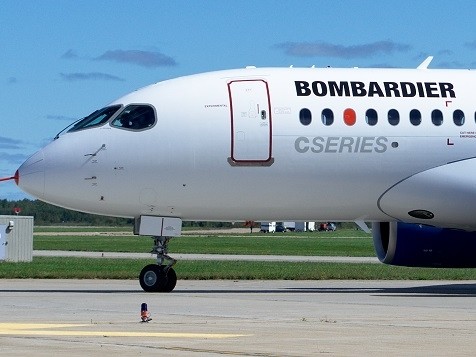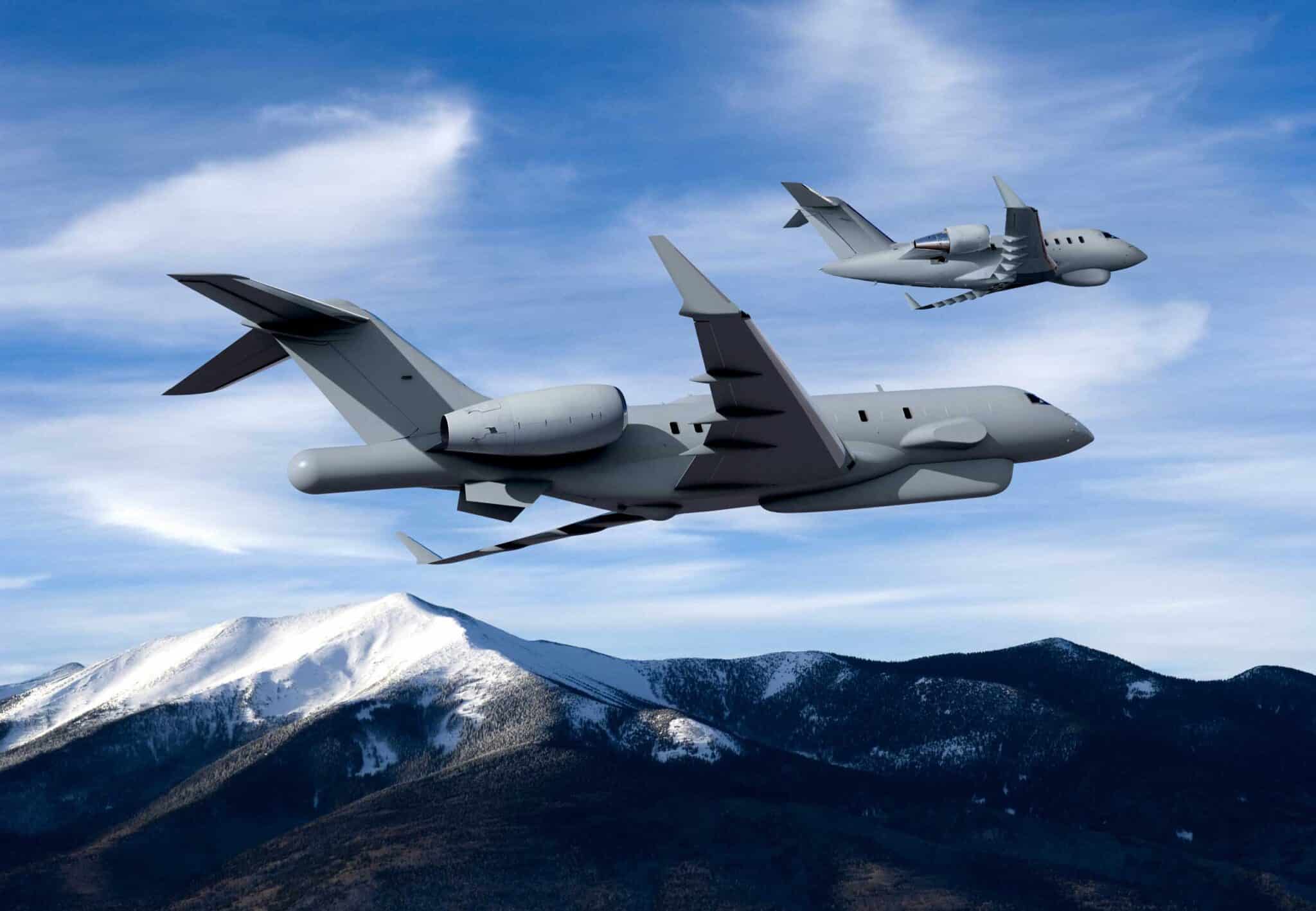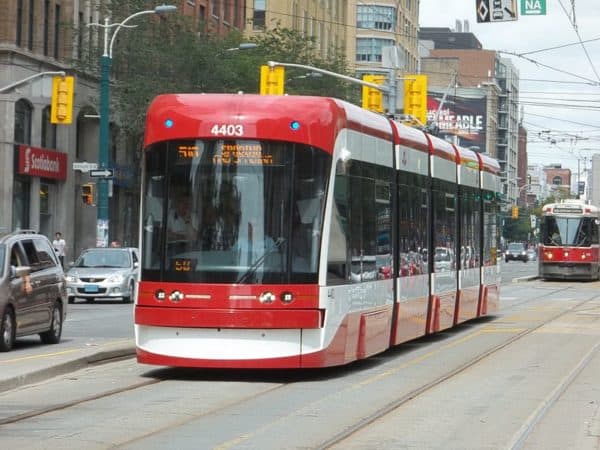Is Bombardier chasing a fad or long-term trend with its CSeries?

The bumpy ride that has been Bombardier’s CSeries hit an especially rough pocket of turbulence last week. Sweden’s Braathens Aviation AB said it was not prepared to meet the original delivery schedule it had agreed to three years ago. In 2011, the airline said it would order ten of the jets, with an option for another ten, in a deal worth a total of $1.37-billion to the Canadian aerospace giant, if completed.
The news was broken in the Swedish company’s annual report.
“We have informed Bombardier that we will not assume the role of formal launch operator of the aircraft type,” said the Braathens filing. “Due to increased uncertainty we are discussing other possible changes to the aircraft delivery schedule with Bombardier.”
Yesterday, Goldman Sachs analyst Noah Poponak downgraded Bombardier, noting that he thinks further delays to the rollout of the CSeries are inevitable. Unfortunately for Bombardier shareholders, the words “CSeries” and “delay” were fast friends who have already shared a trunkload of memories.
In July, COO Guy Hachey -whose charge the CSeries was under- left the company, taking 1800 others with him. In February, the company estimated the total cost of the CSeries, which was originally scheduled to launch in 2013, was $4.4 billion, approximately a billion more than initially estimated.
The CSeries is a class of aircraft known as narrow-body. These are typically single-aisle, often single class, shorter haul planes that accommodate between 110 and 180 people. CSeries competitors include some of the world’s best-selling planes, including the Airbus A320 and the Boeing 737.
“There’s going to be a huge bubble in narrow bodies, so those residual values are going to plummet, which is going to be a great buying opportunity for a carrier like Delta.” -Delta Air Lines CEO Richard Anderson at a June luncheon in Washington.
More than a decade after the CSeries was announced, in July of 2004, there are two questions Bombardier shareholders would love to have answered. First, when will the aircraft become a market reality? Second, will it all be worth it? Some recent takes from industry experts suggest that the promised bounty of the narrow-body market will not be waiting for the company at the gate.
“There’s going to be a huge bubble in narrow bodies, so those residual values are going to plummet, which is going to be a great buying opportunity for a carrier like Delta,” said Delta Air Lines CEO Richard Anderson at a June luncheon in Washington.
______________________________________________________________________________________________________________________
This article is brought to you by Apivio Systems (TSXV:APV). Apivio is a growth oriented Canadian technology company focused in the area of Voice over Internet Protocol (VoIP). Click here to learn more.
_______________________________________________________________________________________________________________________
Some disagree. Boeing VP Beverly Wyse said that company is “not seeing a bubble in the single-aisle market,” instead noting a strong backlog. Wyse says the industry has learned from prior boom and bust cycles and is now doing a “much better job of monitoring production versus demand”.
But Anderson’s theory on narrow-bodies is a persistent one in the industry. It was echoed last year by aircraft expert Ernest S. Arvai. Writing for AirInsight, Arvai said the supply/demand equation for narrow-body aircraft just doesn’t add up, long-term.
“Airbus and Boeing, in their most recent Global Market Forecast and Commercial Market Outlook, show demand for narrow-body aircraft over the next 20 years at 19,518 and 23,240 units, respectively,” he wrote. “But if the world’s airframers will be producing 1,410 per year, or roughly 28,000 aircraft over this period, assuming no further growth from today’s plans, a significant overcapacity gap emerges. That gap, unless production rates are curtailed, would result in a major supply-demand imbalance; marking an additional 43% excess supply over Airbus forecast, and a 20% excess supply over the Boeing forecast. Of course, these forecasts don’t account for dramatic unanticipated events, as seen with the post 9/11 period or even the recent recession that has dampened traffic growth. What happens if we are faced with another event that causes growth to be curtailed? With current demand dropping back closer to replacement levels, even if only for a temporary period of a year or two, the pending bubble would only be exacerbated.”
“The single-aisle market is the fastest-growing and most-dynamic segment due to the emergence of low-cost carriers.” -Boeing VP of Marketing Randy Tinseth.
Still, the fact is that narrow-body aircraft have become the preferred choice in the aircraft industry, comprising nearly 70% of all new planes being built. So where is the demand for narrow-body aircraft coming from? All roads point to the emergence of no-frills carriers.
“The single-aisle market is the fastest-growing and most-dynamic segment due to the emergence of low-cost carriers,” says Boeing VP of Marketing Randy Tinseth.
Tinseth thinks China will surpass the United States in the domestic travel market with twenty years and growth will also come from India and Latin America. “I see robust demand, not less demand for small and medium wide-body aircraft,” he recently told Aviation Pros.
Whatever near term struggles Bombardier faces going forward, shareholders should be watching emerging markets closely. The success or failure of the CSeries may very well depend upon the emergence of a Chinese version of Ryanair, or the Indian iteration of EasyJet.
Nick Waddell
Founder of Cantech Letter
Cantech Letter founder and editor Nick Waddell has lived in five Canadian provinces and is proud of his country's often overlooked contributions to the world of science and technology. Waddell takes a regular shift on the Canadian media circuit, making appearances on CTV, CBC and BNN, and contributing to publications such as Canadian Business and Business Insider.


